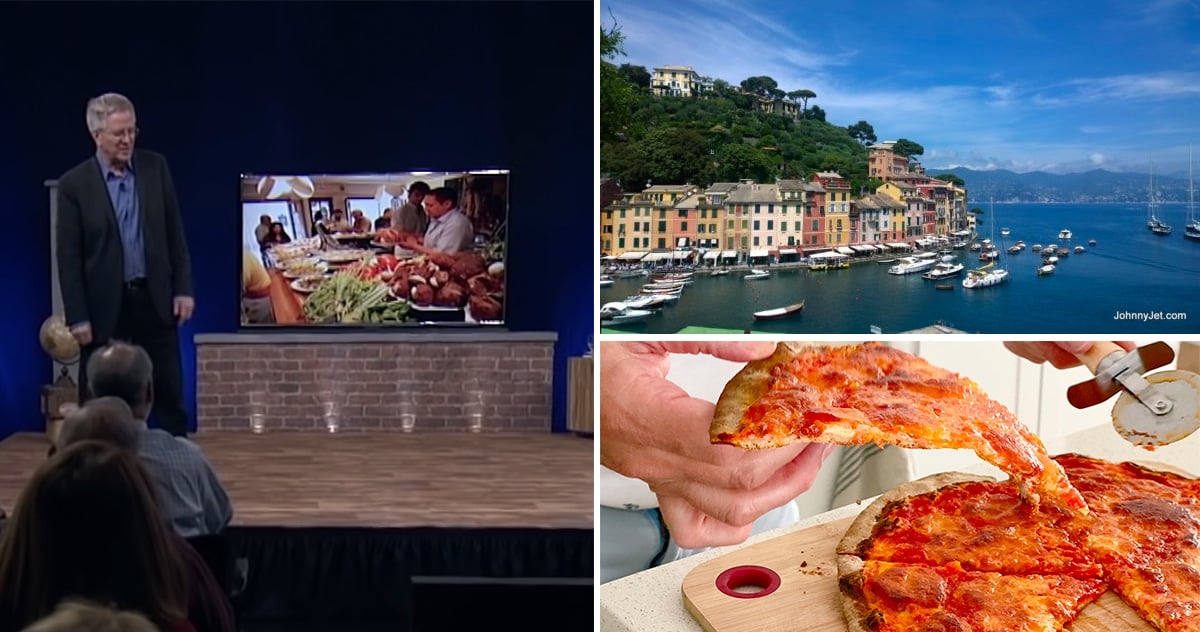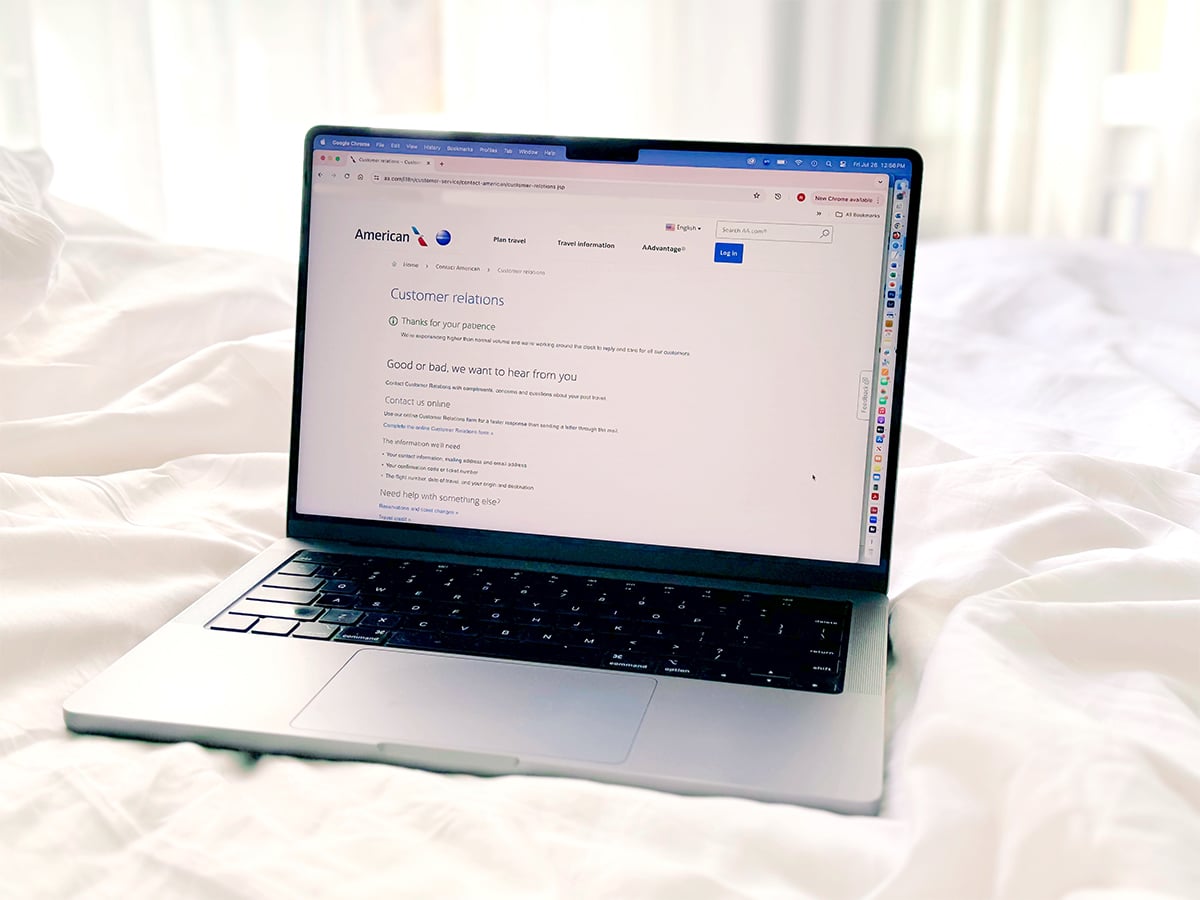Last night, I was flipping through the channels and came across Rick Steves’ European Travel Tips and Tricks show on PBS. I’ve known Rick for a long time. I’ve been fortunate to share many stages with him at travel shows and I’ve been a guest on his radio show a few times. RELATED: Rick Steves Got Pickpocketed in Paris – Here’s How to Prevent it From Happening to You
 This post contains references to products from one or more of our advertisers. We may receive compensation when you click on links to those products. For an explanation of our Advertising Disclosure, visit this page.
This post contains references to products from one or more of our advertisers. We may receive compensation when you click on links to those products. For an explanation of our Advertising Disclosure, visit this page.
I love Rick’s TV shows, his tips and his delivery. He’s very relaxed, prepared and witty. He has so many tips that you should really find some time to watch his shows, this one in particular, which I’ve embedded down below.
Rick had a lot of great advice. Many of the tips I already knew thanks to my countless trips across the pond. But one of the tips, which I think first-timers need to know and seasoned travelers need a reminder about, is avoiding tourist traps.
Many times when you’re sightseeing, you’re in the heart of the tourist areas and when you get hungry, you start looking for places nearby, with a good view and a menu you can read. But what Rick says at the 53-minute mark of the show is spot on. Here’s the transcript:
“What you don’t want is to go to the most expensive piece of real estate in town, Piazza Navona in Rome and look for a big sign in English that says, “No frozen food.” They have a printed menu in five languages that serves the same clichetic items all year long regardless of the season. Everything’s wrong about that.
“What I want is to find a handwritten menu that’s small and I want it to be in one language. I want it in a place that has low rent. A little hole-in-the-wall place. a mom-and-pap place, just big enough, 10 tables, so that mom can cook and dad can serve or vice versa. It’s going to be a family-run in one of these great- my favorite formula.
“It’s a small menu because they’re just cooking up what they can cook and sell profitably. It’s one language because they’re targeting locals not tourists and it’s handwritten because it’s shaped by what’s in the market this week. This is so important. If there’s a good, enthusiastic local crowd here and I got that menu, it’s a fine value. When we’re thinking about choosing a good restaurant, I love the idea that if a smart eater goes to a good restaurant that traveler can look at the menu and know what month it is and where they are by what’s being served. Do you see what I mean? You want to eat with the season and you want to eat locally.
“I don’t like to go to fancy restaurants where I have to get a reservation long in advance and dress up and spend a fortune. Occasionally that’s kind of fun to do, but I want to eat well in a foodie small creative place and I like to go to a more expensive place even on a tight budget and order sparingly. That’s much better than going to a mediocre place and ordering wild. Share the main course. Get a carafe of house wine instead of a bottle of fine wine.”
Before I found the YouTube video I looked on Rick’s website for the information from his show. It was there that I was reminded of another tip, which can get travelers in trouble. Rick says, “If no prices are posted, be wary. Travelers are routinely ripped off by market merchants in tourist centers. Find places that print the prices. Assume any market with no printed prices has a double price standard: one for locals and a more expensive one for tourists.”
Unfortunately, I was scammed this way a couple of decades ago in Budapest (here’s that story). In short, we were charged ten times the prices for drinks we should have been. I’m pretty sure the waiter switched the menu so I would suggest even taking a photo of the menu just in case they try the old switcheroo. I take pictures of almost all menus when I’m traveling since I’m a mad documenter.
Last month, the Daily Mail wrote a story titled: Couple slapped with outrageous bill at notorious Mykonos restaurant. The article reports: “An American couple were slapped with an eye-watering $860 bill after a meal and drinks at a notorious Mykonos restaurant where the owner defends its extortionate prices. Jessica Yarnall, 31, and Adam Hagaun, 30, from Montana, say they believed the cocktails to be $27 each when they ordered at DK Oyster bar by Platys Gialos beach in Mykonos. However the pair say after enjoying two mojitos, four crab legs and a Greek salad, they were handed a bill for a staggering $860. When they challenged the bill, they claim staff produced a ‘shot glass’ drink that they said was an example of the $26.80 mojito and informed them that their mojitos were different ones, at $107 per drink. The menu made it appear like it was $40 for a crab leg but in reality it was $40 for a gram of crab leg with a minimum amount to place an order.”
Things like this don’t just happen in Europe, either. Last month, FOX Business penned a piece titled, “Australian tourist on Bali vacation has ‘mini panic attack’ over restaurant bill: ‘Very costly mistake’. The article reports: “A tourist was charged nearly $2,000 for a bottle of wine while on vacation in Bali, Indonesia. Geoff Murphy, an Australian traveler, recounted his story in a Facebook group called “Bali Bogans.” “I wanted to share a classic ignorant tourist story and my miscalculations when it came to the exchange rate,” he wrote, explaining that it was his third trip to Bali. The tourist was celebrating his partner’s birthday and decided to book an upscale restaurant called FIRE at W.”
These scams don’t happen often so you don’t have to worry too much. Just be aware of them. I’ve eaten at hundreds of European restaurants and have only been scammed once but that one time does leave a bad taste in your mouth. My advice, besides buying a good travel guidebook from a trustworthy source like Rick Steves for the destination you’re heading to and reading it before you get on the plane, is to check the U.S. embassy advisories for your destination. Many are aware of the places that pull these kinds of tricks and warn travelers in advance. Here’s how international travelers can avoid scams, strikes, disasters and more.
KEEP READING:
- Rick Steves Got Pickpocketed In Paris – Here’s How To Prevent It From Happening To You
- Don’t Fall For the Falling Lady Scam
- Is Your Hotel Scamming You?
- Don’t Fall For It: Scammers Are Pretending to be Customs and Border Protection Agents
- Cybersecurity and Fraud Expert Shares Tips on How Not to Get Scammed When Traveling
- How To Avoid Vacation Rental Scams
- Don’t Fall For These QR Code Scams
Love to save money when you travel? Sign up to Johnny Jet’s free newsletter and check out these popular posts: 10 ways to find cheap flights and 12 ways to save money on baggage fees. Follow Johnny Jet on MSN, Facebook, Instagram, Pinterest, and YouTube for all of my travel posts.








When I’d vacation as a child in Europe, my parents would ask the bellman where he’d take his girlfriend/wife for dinner. That was usually a reliable recommendation. We always had lots of good meals using this method.
One of the things I use for international travel is the XE app. You just put in whatever currency you want and it gives you the conversion rate. It’s easy to look at in a store or restaurant.